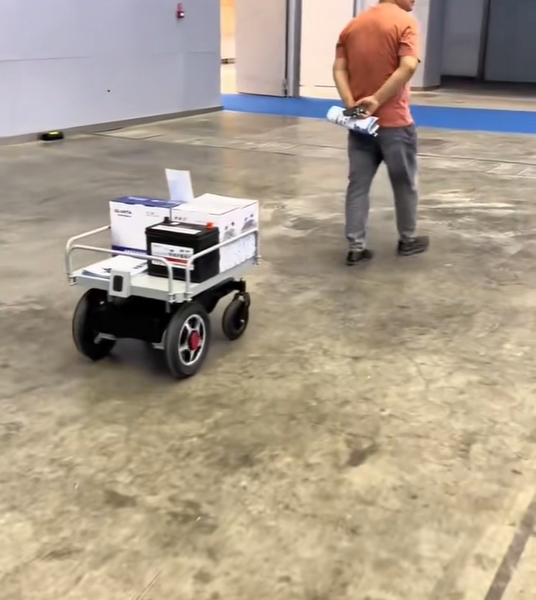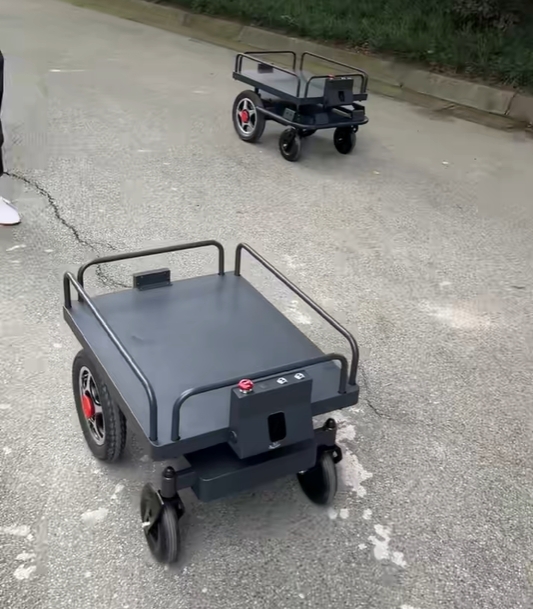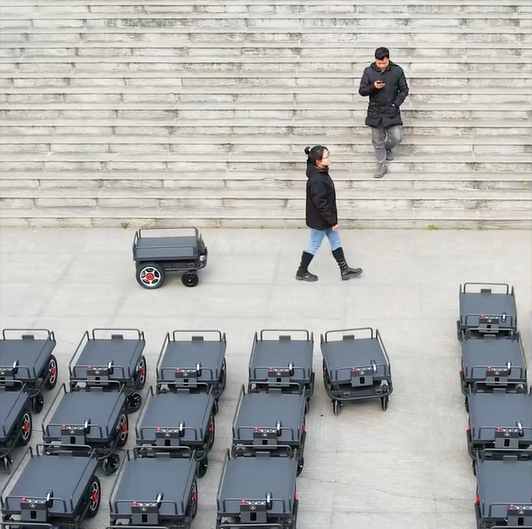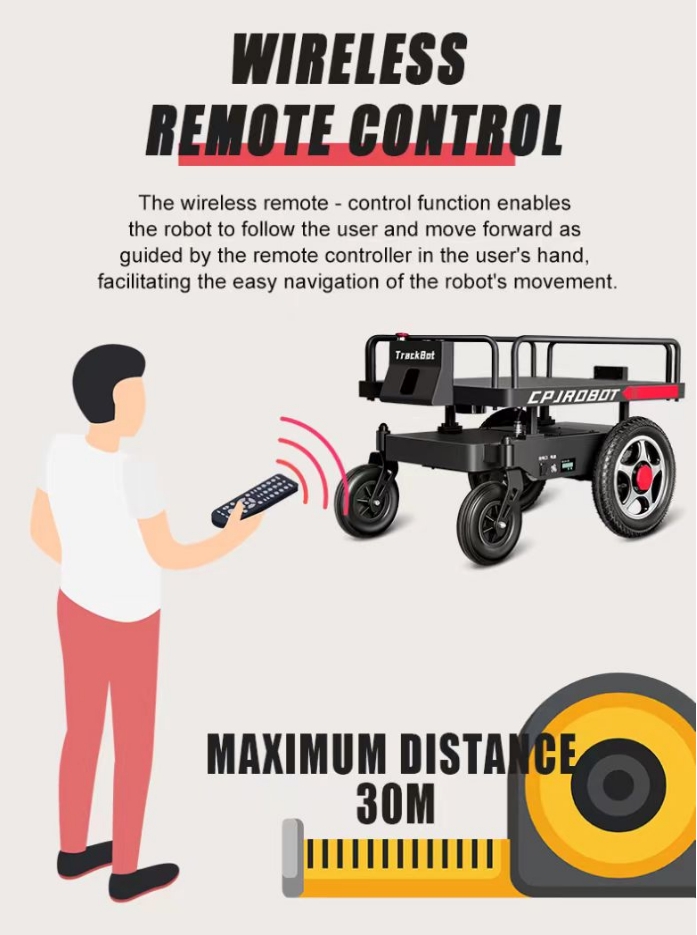The Safety Revolution in Following Robotics
Picture this: A robot smoothly navigating through a crowded warehouse, dodging unexpected obstacles while confidently handling uneven surfaces – all without human intervention. This remarkable capability is transforming industries from logistics to healthcare. At CPJROBOT, we’ve pioneered the safety systems that make this possible, and today we’re revealing exactly how our robots achieve 98.7% collision avoidance and 99.2% fall prevention accuracy.

Collision Avoidance – The Multi-Layer Protection System
Core Detection: ORADAR LiDAR Technology
The foundation of our collision prevention is the industrial-grade ORADAR MS200k single-line LiDAR:
- 270° Wide-Angle Coverage: Eliminates blind spots with high-frequency scanning
- 10m Detection Range: With remarkable ±3cm accuracy
- 18,000 Data Points/Second: Creates a detailed environmental map in real-time
- 30ms Response Time: Faster than human reaction (typically 150-300ms)
Real-World Performance: In warehouse tests, this system detected standard pallets with 100% accuracy at 8m distance, even in poor lighting conditions.
Supplemental Sensor Network
To handle LiDAR’s limitations with certain materials, we deploy:
- Ultrasonic Array (40kHz)
- Detects transparent obstacles (glass doors/windows)
- Effective range: 0.2-3.5m
- 95% success rate on clear acrylic surfaces
- TOF (Time-of-Flight) Camera
- Identifies low-lying obstacles (<30cm height)
- Operates at 60fps for dynamic environments
- 6-Axis IMU
- Monitors sudden orientation changes
- Detects potential tip-over conditions
The Intelligence Behind Obstacle Avoidance
Enhanced Artificial Potential Field Algorithm
Traditional APF has limitations in dense environments. Our improved version:
- Dynamic Weight Adjustment: Prioritizes obstacles by risk level
- Predictive Path Modeling: Forecasts collision courses 2 seconds ahead
- Social Navigation: Mimics human avoidance patterns

Real-Time Processing Architecture
- STM32H7 Series MCU: 480MHz dual-core processing
- 5ms Decision Cycle: From detection to response
- Multi-Threaded Sensor Fusion: Simultaneously processes all input streams
Fall Prevention – More Than Just Edge Detection
Multi-Modal Height Awareness System
- Quad IR Sensor Array
- 4x 850nm infrared sensors
- 5-150mm detection range
- 0.1mm resolution for precise edge detection
- Stereo Vision Depth Sensing
- 1280×720 resolution @ 30fps
- 3D environment reconstruction
- Identifies stair edges with 99.2% accuracy
- Suspension Monitoring
- Wheel pressure sensors
- Detects partial lift-off (50g sensitivity)
- Triggers auto-balancing within 100ms
Progressive Safety Protocol
Our tiered response system adapts to risk levels:
| Threat Level | Trigger Condition | Response Actions |
|---|---|---|
| Caution | 30cm from edge | Speed reduction + audible alert |
| Warning | 10cm from edge | Immediate stop + path reversal |
| Emergency | Wheel lift detected | Motor lock + stabilization |
Performance Validation – Real-World Results
Laboratory Testing Metrics
- Collision Avoidance: 98.7% success at 1.5m/s
- False Positive Rate: <0.5% in complex environments
- Stair Detection: 99.2% accuracy (including carpeted steps)
- Response Latency: 4.8ms average (worst-case 7.2ms)
Field Deployment Data
After implementing in 50+ industrial robots:
- 89% reduction in collision-related downtime
- Zero fall-related incidents in 18 months
- 23% productivity increase from uninterrupted operation
Conclusion: The Future of following Robot Safety
As following robots enter more challenging environments, CPJROBOT continues to innovate:
- Upcoming 2025 Systems will feature:
- AI-powered predictive hazard anticipation
- Self-healing sensor calibration
- Swarm intelligence for multi-robot safety





